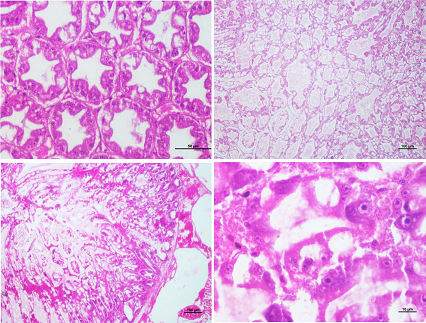Abstract
Hepatopancreatic microsporidiosis caused by Enterocytozoon hepatopenaei (EHP) is an emerging parasitic disease causing great economic losses in almost all shrimp-growing countries. The disease is reported to be associated with severe growth retardation, size variation, and ultimately farm productivity. This study investigated the impact of various infection routes (viz. per os, cohabitation, water-borne and soil-borne) of EHP on disease progression. Per os (oral feeding) challenged shrimp acquired infection at a faster pace and could be detected in 100% of experimental shrimps by 5 days post-infection (dpi) as compared to 15 dpi by cohabitation method. The first detection of faeces of shrimp by water-borne infection was at 7 dpi compared to 15 dpi in the case of soil-borne infection. Soil- and water-borne infections were detectable in 100% of shrimps by 15 and 30 dpi, respectively. Nested PCR revealed a prepatent period of 5 days in case of oral and cohabitation challenge and 7 and 15 days in case of acquiring infection through water and soil sediments, respectively. Thus, a faster and higher level of infection was observed by oral challenge than other methods of infection. It could be inferred that the clinical course and pathogenicity of E. hepatopenaei infection at different time points is determined by the type of exposure, relative size group of the shrimp, and the quantum of infective spores (inoculum) ingested by the shrimp.
